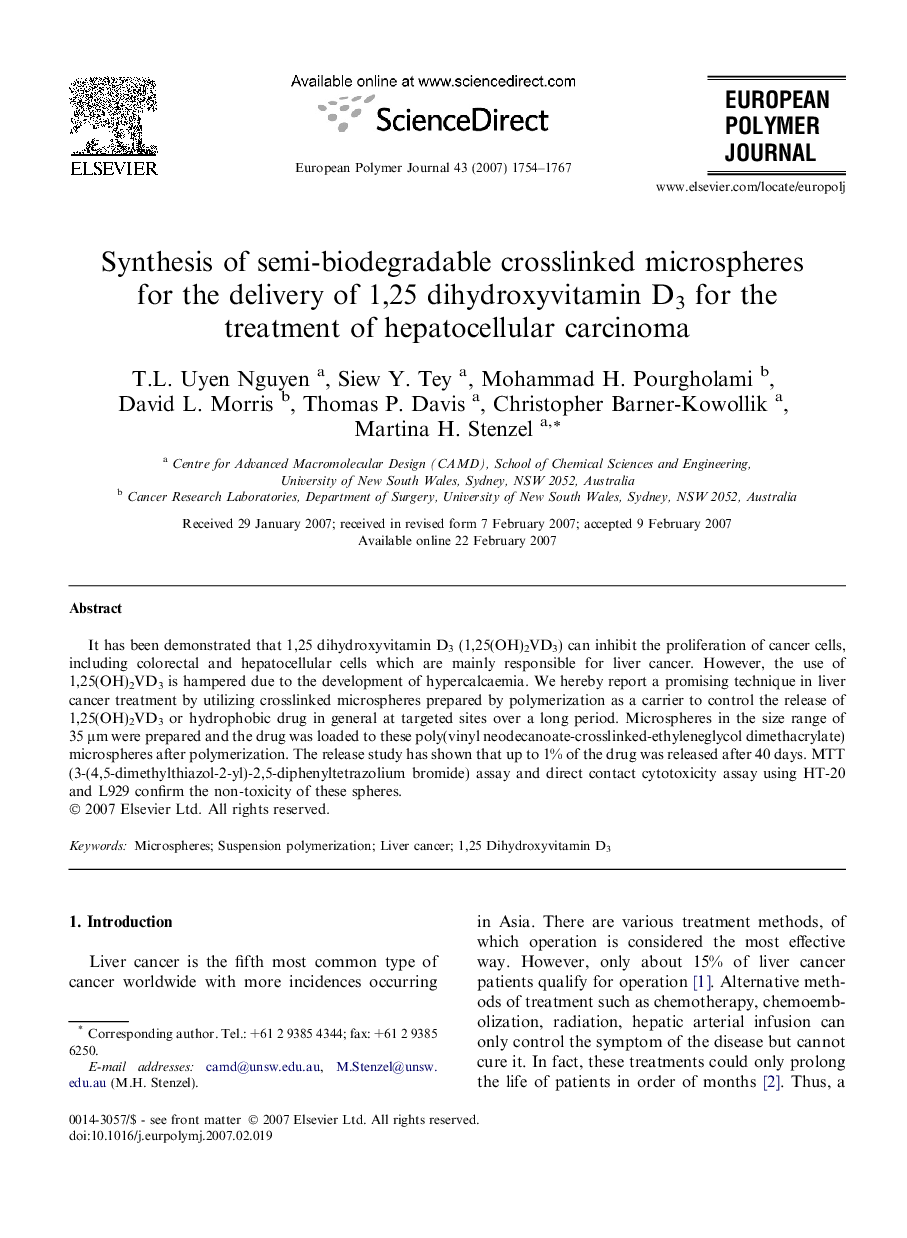| Article ID | Journal | Published Year | Pages | File Type |
|---|---|---|---|---|
| 1403578 | European Polymer Journal | 2007 | 14 Pages |
Abstract
It has been demonstrated that 1,25 dihydroxyvitamin D3 (1,25(OH)2VD3) can inhibit the proliferation of cancer cells, including colorectal and hepatocellular cells which are mainly responsible for liver cancer. However, the use of 1,25(OH)2VD3 is hampered due to the development of hypercalcaemia. We hereby report a promising technique in liver cancer treatment by utilizing crosslinked microspheres prepared by polymerization as a carrier to control the release of 1,25(OH)2VD3 or hydrophobic drug in general at targeted sites over a long period. Microspheres in the size range of 35 μm were prepared and the drug was loaded to these poly(vinyl neodecanoate-crosslinked-ethyleneglycol dimethacrylate) microspheres after polymerization. The release study has shown that up to 1% of the drug was released after 40 days. MTT (3-(4,5-dimethylthiazol-2-yl)-2,5-diphenyltetrazolium bromide) assay and direct contact cytotoxicity assay using HT-20 and L929 confirm the non-toxicity of these spheres.
Related Topics
Physical Sciences and Engineering
Chemistry
Organic Chemistry
Authors
T.L. Uyen Nguyen, Siew Y. Tey, Mohammad H. Pourgholami, David L. Morris, Thomas P. Davis, Christopher Barner-Kowollik, Martina H. Stenzel,
